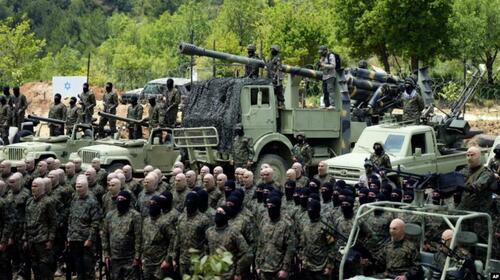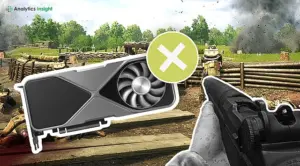
Prompted by military losses and shifting regional geopolitics, the Lebanese political and militant group Hezbollah is considering a major strategic shift that could lead to significant disarmament. According to a report by Reuters, citing three sources familiar with the group’s deliberations, Hezbollah’s leadership is contemplating the handover of its formidable missile and drone arsenal, provided that Israel withdraws its remaining troops from southern Lebanon.
In solidarity with Gaza, Hezbollah began attacking Israel following the October 7, 2023, Hamas invasion of Israel. However, the group suffered significant losses as the Israel Defense Forces (IDF) responded with airstrikes and an invasion. The situation escalated further in September 2024 when Israel executed a mass attack on Hezbollah members, detonating thousands of pagers loaded with the explosive PETN, resulting in nearly 3,000 injuries and at least a dozen deaths, including two children. That same month, an Israeli airstrike killed Hezbollah’s leader of 32 years, Hassan Nasrallah.
Shifting Military and Political Dynamics
Following a ceasefire agreement in November, Hezbollah has begun transferring security responsibilities south of the Litani River to the Lebanese Armed Forces. This move included handing over weapons depots in the region. The group’s leadership is now considering further demilitarization, which would involve relinquishing its missile and drone capabilities while retaining lighter weapons such as antitank missiles.
Despite the ceasefire, Israel has continued to target Hezbollah positions in southern Lebanon. In late June, the IDF launched its largest attack on Lebanon since the ceasefire, claiming to have struck a “significant underground project” used by Hezbollah. More recently, an Israeli strike targeted a vehicle on a crowded highway just south of Beirut, an attack the IDF stated was aimed at an arms smuggler associated with Iran’s Quds Force.
Impact of Syrian Regime Change
Hezbollah’s position has also been weakened by the December fall of Syria’s Assad regime. The regime change, resulting from a years-long US-led effort, replaced the secular, Iran-friendly Bashar al-Assad with a former leader of Jabhat al-Nusra, a Syrian offshoot of al Qaeda that Hezbollah had previously fought against. This shift severed the overland supply route connecting Hezbollah to its principal sponsor, Iran.
In February, the Lebanese government banned commercial flights between Beirut and Tehran, responding to Israeli accusations that Iran used these flights to ship cash to Hezbollah. The group’s weakened position was further illustrated last month when Hezbollah refrained from unleashing its missile arsenal during a 12-day conflict between Israel and Iran, opting instead for official statements condemning Israel’s actions.
Internal Pressures and Future Implications
Internally, Lebanese politics are influencing Hezbollah’s reconsideration of its military role. The Lebanese government seeks to establish a state monopoly on arms, pressing Hezbollah to surrender its remaining weapons. Failure to comply could exacerbate tensions with Lebanese rivals, who accuse Hezbollah of leveraging its military might to influence state affairs and dragging Lebanon into conflicts.
If Hezbollah proceeds with demilitarization, it would mark a significant shift in the Levant’s geopolitical landscape. The group has historically served as both a defender of Lebanon and an instigator of conflicts with Israel, which have brought destruction upon Lebanon. The potential disarmament raises questions about whether this development will ultimately benefit the country.
As Hezbollah navigates these complex challenges, the group’s future actions will likely have lasting implications for regional stability and Lebanon’s internal political dynamics. The coming months may reveal whether Hezbollah’s strategic recalibration will lead to a more peaceful era or further entrench existing tensions.






